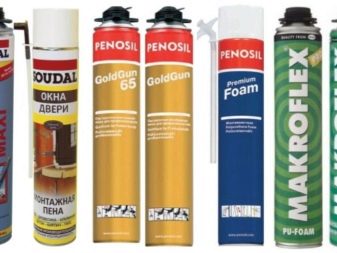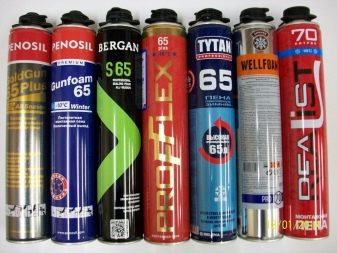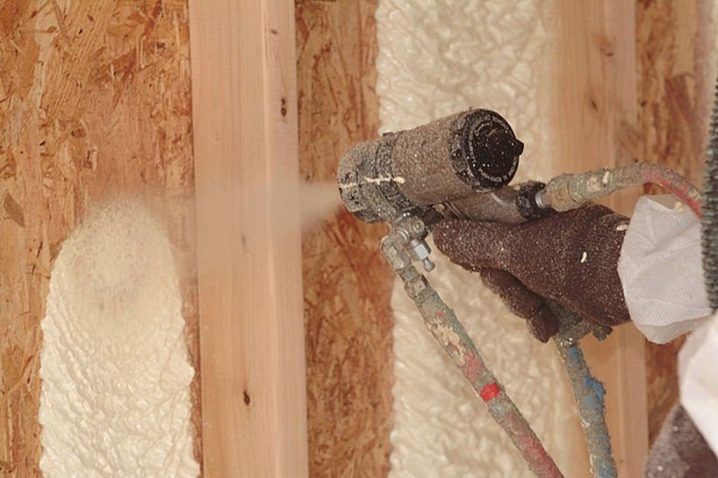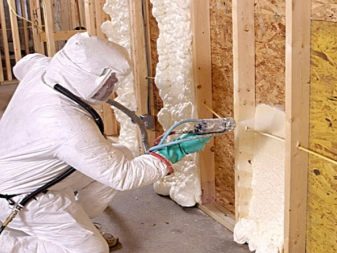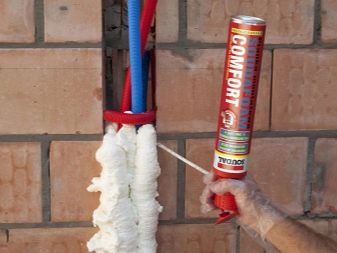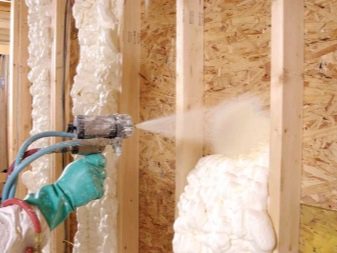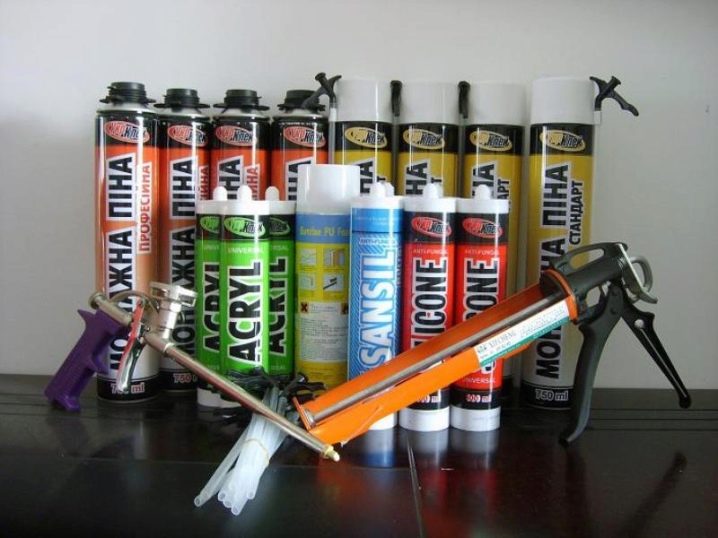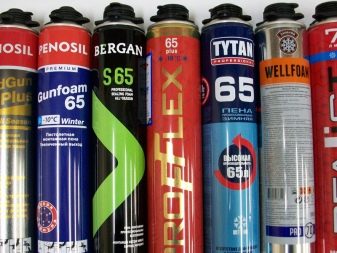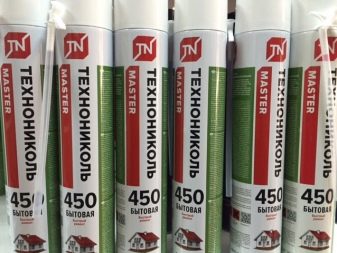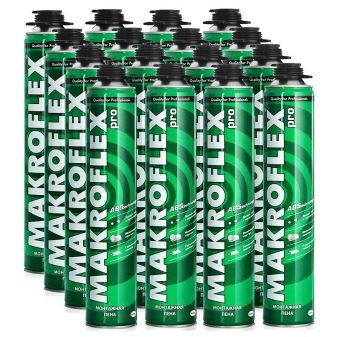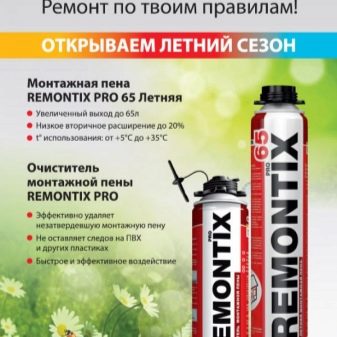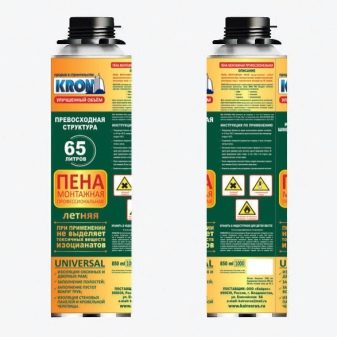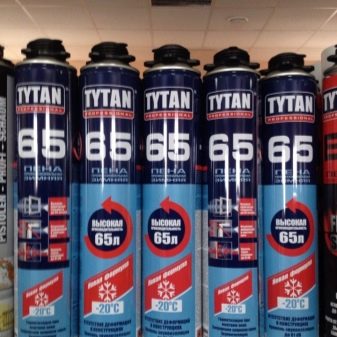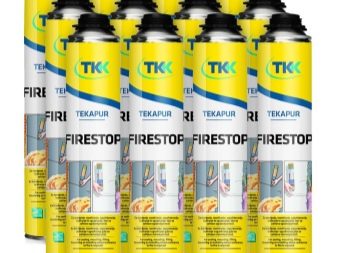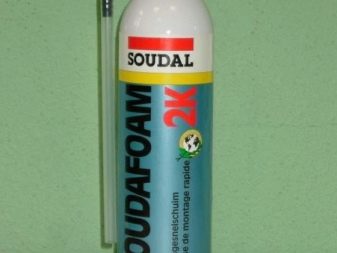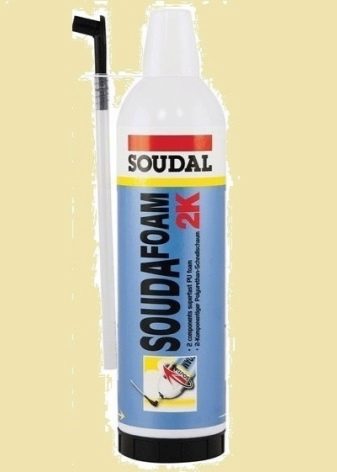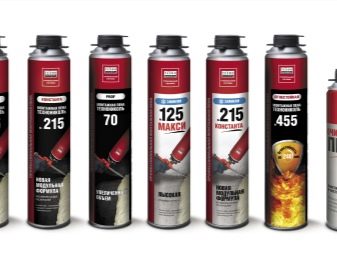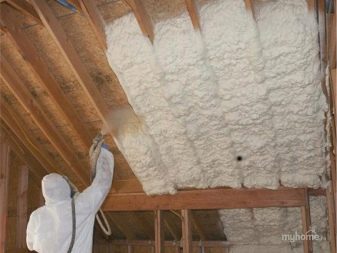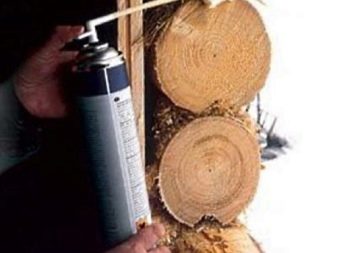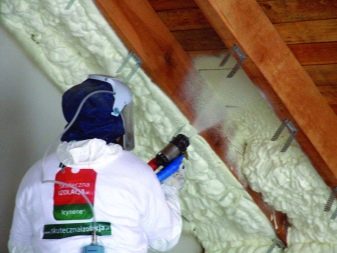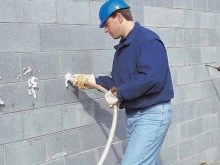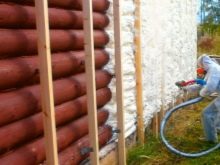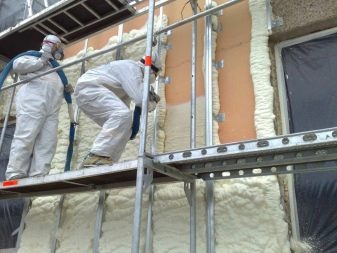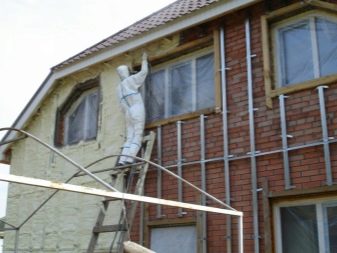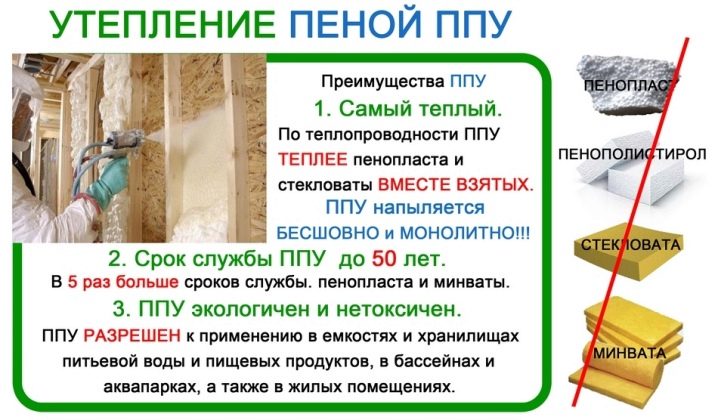Is it possible to insulate the house using foam?
Before we talk about mounting foam as a means of warming a house, it is necessary to figure out what this material is and why it is actually needed.
Features and specifications
Polyurethane foam, also known as polyurethane foam sealant, is a substance widely used in construction for fastening together separate parts of a structure to be joined, heat and sound insulation, sealing and filling voids arising during operation. Usually sold in metal cans, in which the foam itself and the mixture of liquefied gases are under pressure - the so-called. a propellant that serves as a pushing force for the contents of the can. The versatility of this synthetic polymer makes it an indispensable assistant in many types of construction work and in almost any repair.
Of course, polyurethane foam sealant has its own characteristics and characteristics, which will be discussed below.
Merits
The indisputable advantages of the substance in question, which the manufacturer usually indicates on the package, are:
- high degree of adhesion - that is, its ability to firmly attach to many surfaces. The exceptions are Teflon, silicone, ice, polyethylene and oily surfaces;
- heat resistance (as a rule, is in the range from -45 ° C to +90 ° C);
- frozen polyurethane foam is a dielectric (does not conduct electrical current);
- fairly fast setting speed - from eight minutes to days;
- high moisture resistance;
- no toxicity (of course, after the final solidification);
- a small percentage of shrinkage (no more than 5%) throughout the entire period of operation;
- chemical resistance;
- high strength;
- long service life of the material (up to half a century).
Also no less important characteristics are:
- The total output of the sealant is calculated in liters and implies the amount of foam leaving a unit of capacity.This characteristic is influenced by ambient temperature, degree of humidity and windiness.
- Viscosity - mostly depends on air temperature. Temperatures above (or below) certain limits specified for each type of foam adversely affect the viscosity of a substance. For laying it is bad.
- Primary and secondary expansion. Primary expansion - the ability of the composition to expand immediately after leaving the cylinder in a very short time interval (up to sixty seconds). In this short term, polyurethane foam sealant is able to increase in volume by 20-40 times. Secondary expansion refers to the ability of a synthetic polymer to expand for a long time until the final termination of the polymerization.
High-quality polyurethane foam has a pleasant light yellow or slightly greenish color, it does not flow down when applied to the surface and is suitable even for the roof. It is not eaten by rodents and insects, it does not harm the environment. Hardened, the substance turns into a durable porous seamless material, which is quite waterproof and has excellent insulating properties.Polyurethane foam sealant is chemically inert, which is both its advantage and disadvantage. After its solidification, it is not subject to the destructive action of solvents, so its surplus will have to be removed mechanically - with a scraper or pumice.
It is important to note that under the influence of solar ultraviolet this insulating material is subject to rapid destruction - it first darkens and then becomes brittle. Never forget to plaster the area filled with foam after it hardens. Otherwise, it can simply turn into dust.
Polyurethane foam is suitable for warming a frame house. It will serve as a special air layer.
Kinds
It's no secret that modern manufacturers of heaters offer a wide range of sealants to choose from. Let's try together to understand the abundance of types of foam and see what types of substance required will best serve one purpose or another.
Polyurethane foam differs in several parameters.
Type
Household
Pros: for working with household foam does not require special equipment.It can easily be distinguished from a professional type of external cartridge: at the end of the container there is a special valve on which the lever with a plastic tube is fixed.
Cons: can only be used to fill small voids or slots, is not used for installation, as almost always requires trimming - the volume of this type of sealant, as a rule, is higher than the volume of the space filled by it.
Professional
Pros: higher than the previous type, the coefficient of primary expansion, increased elasticity and a smaller structure. The supply of material can be controlled, so it lays down more carefully than household, evenly filling the required volume. Also it is necessary to mention that professional polyurethane foam easily attaches to almost any surface.
Cons: to work with a professional view requires an assembly gun. However, given the versatility and wide scope of application, this minus is very relative.
By temperature of use
Summer
Summer foam is recommended for use at positive temperatures - approximately from +5 to +30.At low ambient temperatures, the yield of the beneficial substance from the cartridge decreases, and the degree of expansion drops significantly. Work at elevated temperatures also should not be due to the characteristics of the prepolymer, whose viscosity in such cases is significantly reduced.
Winter
Usually used at temperatures from -10 to +40 degrees. However, there are some types of foam that allow you to work even at -20 - for example, sealant "Tytan Professional 65". After solidification, the winter type can easily withstand a seventy degree frost. Suitable for barrels in which you can store any substance.
All-season (or universal)
In fact, it has almost the same temperature range as the winter one and does not always stand out in a separate group. Work with it is carried out at a temperature of from -15 to +30 degrees.
By the number of components in the cartridge
Single component
It is quite widespread and has a relatively low cost. The polymerization reaction occurs with water. The shelf life does not exceed one year.
Pros: low cost, ready to use immediately after purchase, easy to use.
Minuses: short shelf life.
Two-component (constructional)
Water does not participate in the reaction. It is replaced by a special component that is located in a small hermetically sealed container inside the container itself. Its cost is higher than that of a single component and, as a rule, it is sold in cylinders of small volume (usually 220 ml), because the period of hardening of the substance after mixing the components is brief and is ten minutes.
Pros: neat filling of voids.
Minuses: high cost, in the manufacture of polyurethane mixtures must strictly adhere to the established proportions.
According to the degree of flammability
- Class B1 - fire-resistant and fire-fighting. Usually there is a pink or bright red tint - dyes are added specifically so that when applied, the type of composition is immediately visible.
- Class B2 - self-extinguishing, as the name implies, it does not support combustion.
- Class B3 - combustible PPU foam with zero refractoriness. The feedback is mostly positive.
Insulation technology
There are several principles of insulation with a sealant with your own hands. We single out two basic principles and consider them in detail:
- The first and most common technology of insulation produced with the participation of polyurethane foam is spraying. As the name implies, this is the process of distributing foam over the surface using a spray gun. The sealant instantly connects to the substrate on which it is applied, creating an even layer that covers the area being insulated. This allows you to make the insulation quickly and, importantly, does not require alignment of the walls before spraying. The remains of the material is simply cut off.
- Filling. This technology is most often used in the construction process, when the construction of a building being erected provides for voids that should be filled with an insulating substance. However, the application of this principle of warming is possible with a fully erected structure, however, in this case, you must have technological holes through which foam will be supplied, as well as equipment for its injection. There is quite a complex drilling. Using the filling method is dangerous for buildings lined up with low quality materials - because the sealant, expanding, can damage the walls.A significant advantage of filling can be called the lack of need for exterior trim.
Stages of work
Before you start working with this insulating substance, you must wear working clothes, gloves and protect your respiratory organs - for example, a respirator, and eyes - with transparent plastic glasses. It is not recommended to allow prolonged contact of the liquid substance with the skin - it can cause serious irritation. If the sealant gets on unprotected skin, it is desirable to wash it off as soon as possible with water and soap.
Then you should prepare the surface for the application of the insulating material, after removing dust and dirt from it. It is preferable to carry out wet cleaning, because the mounting foam will stick to the wetted surface much better. If the composition must fill the space between the pipes, then they can be wrapped with oilcloth so as not to get dirty.
After the preparatory stage, we can begin, in fact, the insulation.
If you use the spraying technology, then the installation foam must be applied from the bottom up, paying special attention to the corners and joints of the surfaces so as not to leave blank areas.To achieve a certain thickness of insulation, you can safely apply several layers to each other.
If the method chosen by you is the filling, then it is recommended to fill the foam in portions from top to bottom, relying on the fact that the sealant itself will be distributed inside the filled volume and will evenly fill it. Unfortunately, when using this technology, you will not be able to follow the uniform filling of the voids left. After pouring it is advisable to remove the streaks that may appear - they look quite unaesthetic. Technological holes, through which the sealant got inside the space filled with it, it is best not to leave open. It is desirable to close them.
After the final hardening / hardening of the mounting foam, we can safely assume that the insulation took place. However, you should not forget that in order to avoid decomposition and reduce the strength of a substance, the warmed surface must be protected from direct sunlight. This can be done with paint, plaster, putty. You can also sheathe the treated surface with something, say, drywall or other dense material.
Where can I use?
It is possible to warm polyurethane foam as residential or industrial buildings (inside or outside), and window or door openings, as well as fill the voids formed in the walls during the laying of communications and pipes. Wonder-sealant easily fills even small cracks, preventing the occurrence of insidious drafts. The walls, floors and ceilings are easy to warm. It protects the tree from decay and fungal mold. Iron - from corrosion.
Ecological purity of the sealant allows you to use it even in such a case as warming the nursery. Therefore, if we return to the topic of our article: “Is it possible to warm the house with the use of foam? "- the answer will be determined. You can even need it! Of course, the high price of polyurethane foam sealant may scare away, but the advantages voiced above will definitely be worth the money you spend on warming your home. True, we should not forget about one nuance - the use of this type of insulation material makes the insulated room almost airtight, which means that the building or room should have well-thought-out ventilation so that no stuffiness or stale air problems occur.
Polyurethane foam is suitable for insulation of hangars, garage doors, garages, facades, windows, and balconies and baths. With the help of the material, it is possible to insulate the area of the interwall space between the brick and the block. Waterproofing it from the inside and on the roof is more reliable.
How to insulate a balcony with polyurethane foam, see the following video.

